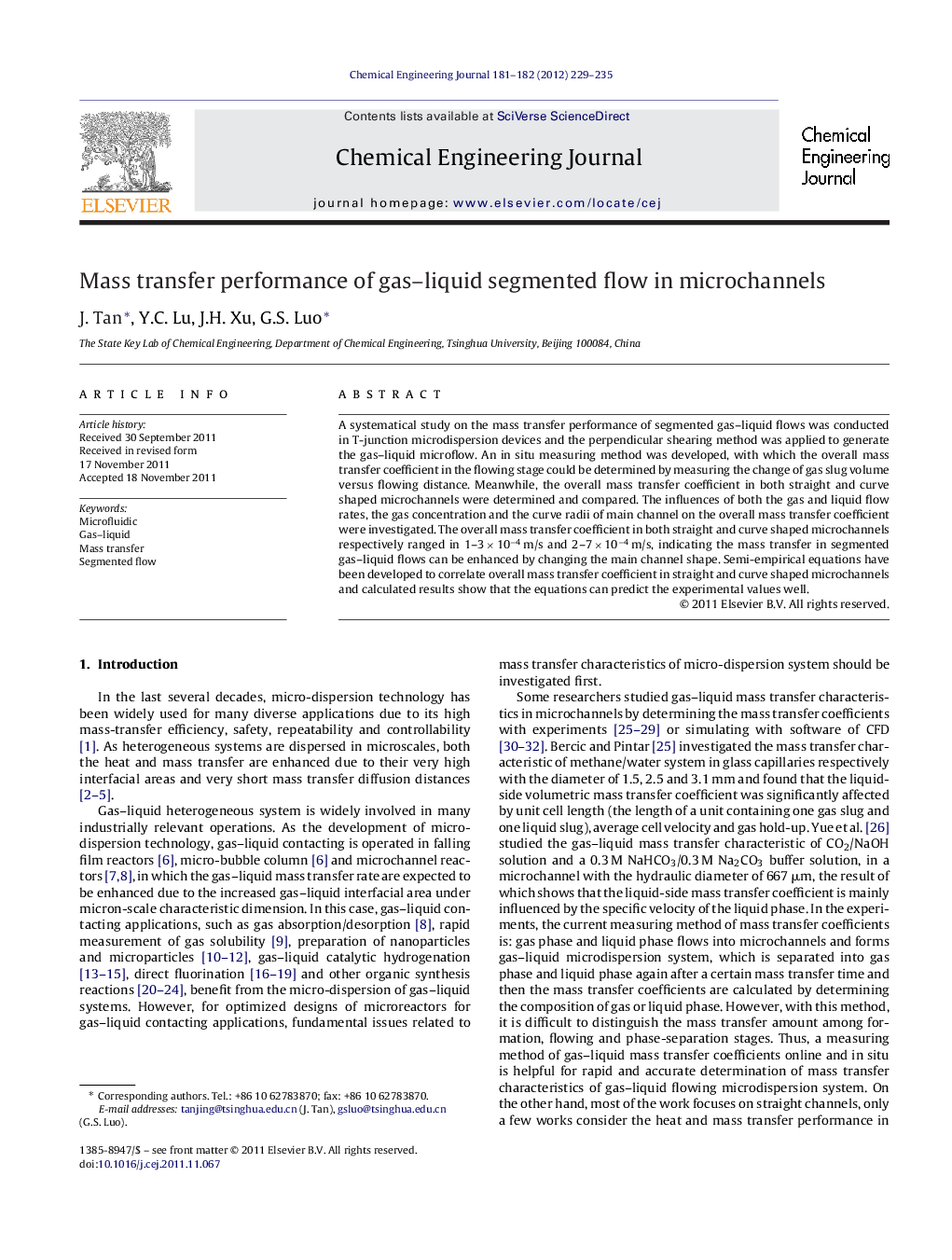| Article ID | Journal | Published Year | Pages | File Type |
|---|---|---|---|---|
| 150198 | Chemical Engineering Journal | 2012 | 7 Pages |
A systematical study on the mass transfer performance of segmented gas–liquid flows was conducted in T-junction microdispersion devices and the perpendicular shearing method was applied to generate the gas–liquid microflow. An in situ measuring method was developed, with which the overall mass transfer coefficient in the flowing stage could be determined by measuring the change of gas slug volume versus flowing distance. Meanwhile, the overall mass transfer coefficient in both straight and curve shaped microchannels were determined and compared. The influences of both the gas and liquid flow rates, the gas concentration and the curve radii of main channel on the overall mass transfer coefficient were investigated. The overall mass transfer coefficient in both straight and curve shaped microchannels respectively ranged in 1–3 × 10−4 m/s and 2–7 × 10−4 m/s, indicating the mass transfer in segmented gas–liquid flows can be enhanced by changing the main channel shape. Semi-empirical equations have been developed to correlate overall mass transfer coefficient in straight and curve shaped microchannels and calculated results show that the equations can predict the experimental values well.
Graphical abstractFigure optionsDownload full-size imageDownload as PowerPoint slideHighlights► Mass transfer performance of segmented gas–liquid flows was systematically studied. ► An in situ method was developed to measure the mass transfer coefficient. ► KL in both straight and curve shaped microchannels were determined and compared. ► Influences of flow rates, gas concentration and channel geometry were investigated. ► Semi-empirical equations were developed to predict the mass transfer coefficients.
